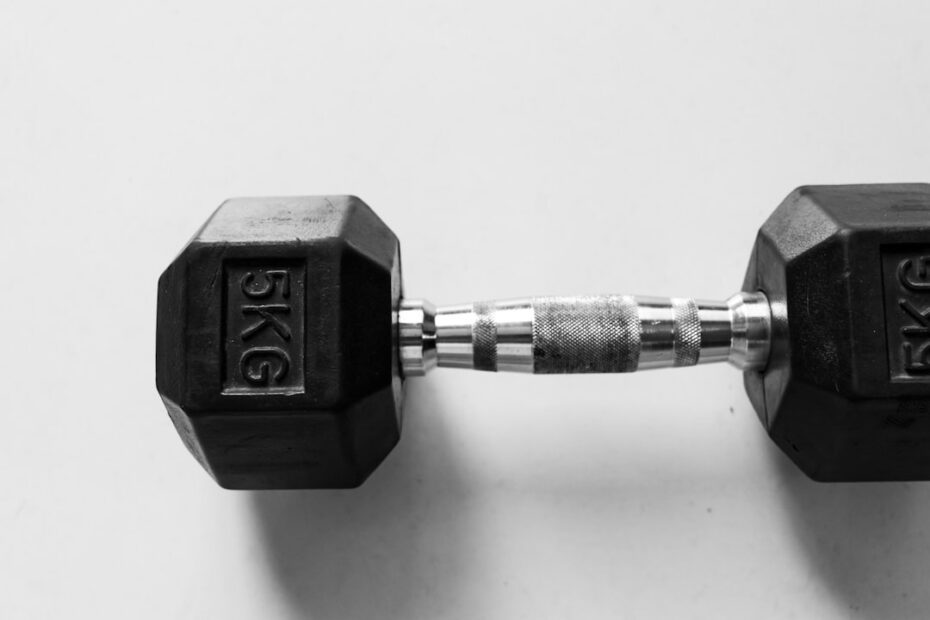In the realm of fitness, cardio and strength training are two foundational pillars that contribute significantly to overall health and well-being. Cardiovascular exercise, often referred to as aerobic exercise, focuses on elevating the heart rate and improving the efficiency of the cardiovascular system. This type of training is essential for enhancing endurance, burning calories, and promoting heart health.
On the other hand, strength training, which includes resistance exercises aimed at building muscle mass and strength, plays a crucial role in increasing metabolism, improving bone density, and enhancing functional fitness. Together, these two forms of exercise create a comprehensive fitness regimen that addresses various aspects of physical health, making it vital for individuals to understand their unique benefits and how they complement each other. The importance of integrating both cardio and strength training into a fitness routine cannot be overstated.
While cardio workouts are excellent for burning fat and improving cardiovascular health, they often do not provide the muscle-building benefits that strength training offers. Conversely, strength training can lead to muscle fatigue and may not elevate the heart rate sufficiently to achieve optimal cardiovascular benefits. Therefore, a balanced approach that incorporates both modalities is essential for achieving total fitness.
This synergy not only enhances physical performance but also contributes to mental well-being by releasing endorphins during workouts, reducing stress levels, and improving mood. Understanding this interplay is crucial for anyone looking to embark on a successful fitness journey.
Key Takeaways
- Cardio and strength training are both important for total fitness
- Cardio helps improve cardiovascular health, endurance, and calorie burning
- Strength training helps build muscle, increase metabolism, and improve overall strength
- Incorporate both cardio and strength training into your fitness routine for optimal results
- Finding the right balance between cardio and strength training is key for a well-rounded fitness routine
The Benefits of Cardio for Total Fitness
Physical Health Benefits of Cardiovascular Exercise
Cardiovascular exercise offers numerous benefits that extend beyond weight loss. Engaging in regular cardio workouts can significantly improve heart health by strengthening the heart muscle, lowering blood pressure, and enhancing circulation. This type of exercise increases the efficiency with which oxygen is delivered to the body’s tissues, thereby improving overall stamina and endurance.
Regulating Blood Sugar and Weight Management
Additionally, cardio workouts can help regulate blood sugar levels, making them particularly beneficial for individuals at risk of developing type 2 diabetes. The metabolic boost provided by cardio can also aid in weight management, as it helps to burn calories both during and after exercise through the afterburn effect.
Mental Health and Cognitive Function Benefits
Engaging in aerobic activities such as running, cycling, or swimming can lead to the release of endorphins, often referred to as “feel-good” hormones. This natural mood enhancement can alleviate symptoms of anxiety and depression while promoting a sense of well-being. Furthermore, regular cardiovascular exercise has been linked to improved cognitive function, including better memory and concentration.
Long-Term Benefits and Importance of Cardiovascular Fitness
As individuals age, maintaining cardiovascular fitness becomes increasingly important for preserving cognitive health and reducing the risk of neurodegenerative diseases. Thus, incorporating cardio into a fitness routine not only supports physical health but also fosters mental resilience.
The Benefits of Strength Training for Total Fitness

Strength training is often misunderstood as merely a means to build muscle mass; however, its benefits extend far beyond aesthetics. One of the most significant advantages of strength training is its ability to increase basal metabolic rate (BMR), which refers to the number of calories burned at rest. By building lean muscle mass through resistance exercises, individuals can enhance their metabolism, making it easier to maintain a healthy weight or lose excess body fat.
Additionally, strength training plays a critical role in improving bone density, which is particularly important for older adults who are at risk of osteoporosis. By applying stress to bones through resistance exercises, individuals stimulate bone growth and strengthen their skeletal structure. Furthermore, strength training contributes to improved functional fitness, which is essential for daily activities and overall quality of life.
As individuals age or face physical challenges, maintaining strength becomes crucial for performing everyday tasks such as lifting groceries or climbing stairs. Resistance training enhances muscular endurance and coordination, reducing the risk of falls and injuries. Moreover, it can improve posture and alleviate back pain by strengthening core muscles that support the spine.
The psychological benefits of strength training should not be overlooked either; many individuals report increased confidence and self-esteem as they achieve their strength goals. This empowerment can lead to a more active lifestyle and a greater willingness to engage in various physical activities.
How to Incorporate Cardio and Strength Training into Your Fitness Routine
| Cardio | Strength Training |
|---|---|
| Increases heart rate | Builds muscle mass |
| Improves endurance | Boosts metabolism |
| Burns calories | Increases bone density |
| Reduces stress | Improves posture |
| Enhances cardiovascular health | Prevents injury |
Incorporating both cardio and strength training into a fitness routine requires careful planning and consideration of individual goals and preferences. A well-rounded approach might involve dedicating specific days to each type of workout or combining them within the same session. For instance, one could alternate between cardio-focused days—such as running or cycling—and strength training days that include weightlifting or bodyweight exercises.
This method allows for adequate recovery time between sessions while ensuring that both aspects of fitness are addressed consistently throughout the week. Another effective strategy is to integrate circuit training into your routine, which combines both cardio and strength exercises in a single workout session. For example, one might perform a series of strength exercises followed by short bursts of high-intensity cardio intervals—such as jumping jacks or burpees—before returning to strength work.
This approach not only keeps workouts engaging but also maximizes calorie burn and improves cardiovascular fitness simultaneously. Regardless of the method chosen, it is essential to listen to your body and adjust the intensity and duration of workouts based on personal fitness levels and recovery needs.
Finding the Right Balance Between Cardio and Strength Training
Striking the right balance between cardio and strength training is crucial for achieving optimal fitness results while minimizing the risk of injury or burnout. The ideal ratio often depends on individual goals; for instance, those aiming for weight loss may benefit from a higher emphasis on cardio workouts to maximize calorie expenditure. Conversely, individuals focused on building muscle mass may prioritize strength training while incorporating moderate amounts of cardio for cardiovascular health without compromising muscle gains.
A common recommendation is to aim for at least 150 minutes of moderate-intensity aerobic activity per week alongside two or more days dedicated to strength training targeting all major muscle groups. However, this guideline can be adjusted based on personal preferences and lifestyle factors. It is essential to monitor progress regularly and make necessary adjustments to ensure that both cardio and strength components are effectively contributing to overall fitness goals.
Ultimately, finding this balance requires experimentation and self-awareness; what works for one person may not be suitable for another.
Tips for Maximizing the Effectiveness of Your Cardio and Strength Workouts

Optimizing Cardio Workouts
Incorporating interval training into cardiovascular exercises can significantly enhance results by alternating between high-intensity bursts and lower-intensity recovery periods. This method not only boosts cardiovascular endurance but also increases calorie burn during and after workouts due to elevated metabolic rates post-exercise. Additionally, varying your cardio routine by trying different activities such as swimming, cycling, or group classes can prevent boredom while challenging different muscle groups.
Effective Strength Training
When it comes to strength training, proper form is paramount for preventing injuries and ensuring that targeted muscles are effectively engaged. Utilizing free weights or resistance bands can provide greater range of motion compared to machines, allowing for more functional movements that mimic everyday activities.
Progressive Overload and Compound Movements
Furthermore, progressively increasing weights or resistance over time will stimulate muscle growth and strength gains. Incorporating compound movements such as squats, deadlifts, and bench presses can also yield significant benefits by engaging multiple muscle groups simultaneously.
Common Mistakes to Avoid When Balancing Cardio and Strength Training
While striving for a balanced fitness routine that includes both cardio and strength training, individuals often fall prey to common mistakes that can hinder progress or lead to injury. One prevalent error is neglecting one aspect in favor of the other; for example, focusing solely on cardio while disregarding strength training can result in muscle loss over time and decreased metabolic rate. Conversely, overemphasizing strength training without adequate cardiovascular exercise may lead to diminished endurance levels and increased fatigue during daily activities.
Another mistake is failing to allow sufficient recovery time between workouts. Both cardio and strength training place stress on the body; without proper rest, individuals risk overtraining syndrome characterized by fatigue, decreased performance, and increased susceptibility to injuries. It is crucial to listen to your body’s signals and incorporate rest days into your routine as needed.
Additionally, many people underestimate the importance of nutrition in supporting their fitness goals; consuming a balanced diet rich in protein, healthy fats, and carbohydrates is essential for fueling workouts and aiding recovery.
The Importance of Rest and Recovery in a Cardio and Strength Training Routine
Rest and recovery are often overlooked components of an effective fitness regimen but are vital for long-term success in both cardio and strength training pursuits. During exercise, muscles undergo microscopic tears that require time to heal; this process leads to muscle growth and increased strength over time. Without adequate rest periods between workouts targeting the same muscle groups, individuals may experience diminished returns on their efforts due to fatigue or injury.
Incorporating active recovery days—where low-intensity activities such as walking or yoga are performed—can promote blood flow to muscles while allowing them time to recover from more intense workouts. Additionally, prioritizing sleep is crucial; quality sleep supports hormonal balance necessary for muscle repair and overall recovery processes within the body. By recognizing the importance of rest in conjunction with regular exercise routines focused on both cardio and strength training, individuals can optimize their performance while minimizing risks associated with overtraining or burnout.
In conclusion, understanding the interplay between cardio and strength training is essential for anyone seeking total fitness. By recognizing their unique benefits and learning how to effectively incorporate both into a balanced routine while avoiding common pitfalls related to recovery or nutrition will ultimately lead individuals toward achieving their health goals more efficiently.
FAQs
What is the importance of balancing cardio and strength training for overall fitness?
Balancing cardio and strength training is important for overall fitness because it helps improve cardiovascular health, build muscle strength, increase endurance, and maintain a healthy body composition.
How often should I incorporate cardio and strength training into my fitness routine?
It is recommended to incorporate both cardio and strength training into your fitness routine at least 3-5 times per week, with a balance between the two types of exercise.
What are some examples of cardio exercises?
Examples of cardio exercises include running, cycling, swimming, jumping rope, and high-intensity interval training (HIIT).
What are some examples of strength training exercises?
Examples of strength training exercises include weightlifting, bodyweight exercises (such as push-ups and squats), resistance band exercises, and using weight machines.
How can I create a balanced workout routine that includes both cardio and strength training?
To create a balanced workout routine, you can alternate between cardio and strength training days, incorporate circuit training that combines both types of exercises, or participate in fitness classes that include a mix of cardio and strength exercises.
What are the potential benefits of balancing cardio and strength training for overall fitness?
Balancing cardio and strength training can lead to improved heart health, increased muscle tone and strength, enhanced endurance, better metabolism, and overall improved physical performance.
- Unveiling the Truth: Weightlifting for Women and Strength Building - November 4, 2024
- The Ultimate Guide to Weightlifting for Beginners - November 4, 2024
- Boost Your Mood and Ease Anxiety with Cardio Exercises - November 4, 2024




